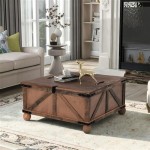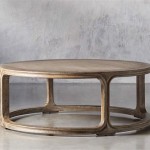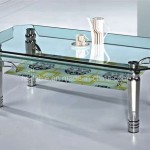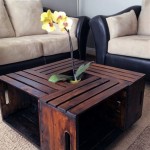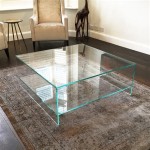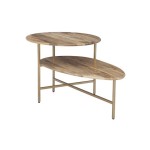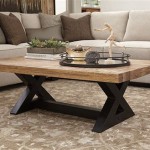Postmodern Coffee Table: A Journey Through Style, Design, and Expression
In the realm of interior design, coffee tables hold a special place, anchoring living rooms and entertaining spaces with both functionality and aesthetic appeal. The postmodern era, known for its eclectic blend of aesthetics and its penchant for pushing design boundaries, has given rise to a distinct style of coffee table that reflects the movement's spirit of experimentation and individuality. ### Characteristics of Postmodern Coffee Tables: 1.Eccentric Forms:
Postmodern coffee tables often break away from conventional shapes, embracing unexpected geometric forms, organic contours, and asymmetric lines. These tables become sculptural elements within a room, engaging the eye with their bold presence. 2.Material Fusion:
Postmodern designers revel in juxtaposing contrasting materials, creating tables that combine wood with metal, glass with stone, or acrylic with leather. This interplay of textures adds depth and intrigue to the design. 3.Bold Colors and Patterns:
While postmodernism embraces neutral tones, it also celebrates vibrant colors and eye-catching patterns. Coffee tables adorned with graphic motifs, abstract designs, or color-blocking become focal points that energize the space. 4.Irony and Humor:
Postmodernism often employs irony and humor as design elements. Coffee tables might feature unexpected combinations of objects, playful motifs, or tongue-in-cheek references, adding a touch of whimsy to the room. ### Design Inspirations: 1.Memphis Movement:
The Memphis Group, an influential postmodern design collective, left an indelible mark on coffee table design. Their Memphis-style tables feature bold geometric patterns, vibrant colors, and unconventional shapes, embodying the movement's ethos of playful rebellion. 2.Art Deco Revival:
Postmodern designers often drew inspiration from earlier design movements, reinterpreting and updating them with a contemporary twist. Art Deco motifs, with their streamlined forms and geometric patterns, found a fresh expression in postmodern coffee tables. 3.Industrial Chic:
The postmodern era witnessed a growing appreciation for industrial materials and aesthetics. Coffee tables made from reclaimed wood, metal pipes, or concrete blocks embody this trend, bringing a raw, urban edge to living spaces. ### Functionality and Form: While postmodern coffee tables often prioritize aesthetics, they don't compromise on functionality. Many designs incorporate storage solutions, hidden compartments, or adjustable surfaces, ensuring that form and function coexist harmoniously. ### Conclusion: Postmodern coffee tables are more than just furniture pieces; they are expressions of creativity, individuality, and the spirit of experimentation. They challenge conventional design norms, blurring the lines between art and utility. By embracing the unique qualities of postmodern coffee tables, homeowners can create living spaces that are both stylish and thought-provoking, reflecting their own personal style and taste.
Post Modern Glas Italia Coffee Table Milia

Postmodern Glass Coffee Table For At Pamono

An Elegant Post Modern Coffee Table Iliad

Luxury Coffee Table Tv Kabini Post Modern Minimalist Kombine Mobilyalar Çin Indolap Mobilya

Memphis Vintage Post Modern Glass Coffee Table

Postmodern French Triangular Elm Coffee Table 1970s For At Pamono

Ready For Post Modern Glas Italia Coffee Table Milia

Post Modern Formica And Glass Coffee Table After Panton C 1970 S For At 1stdibs

Vintage Tesated Table Post Modern Stone Coffee Corner Denmark

1980s Post Modern Black Lacquer Coffee Table In The Roger Rougier Style Chairish

